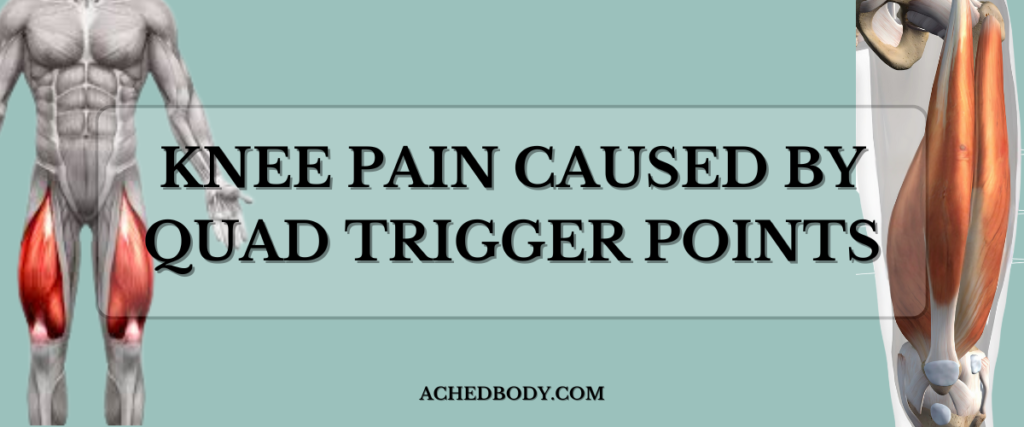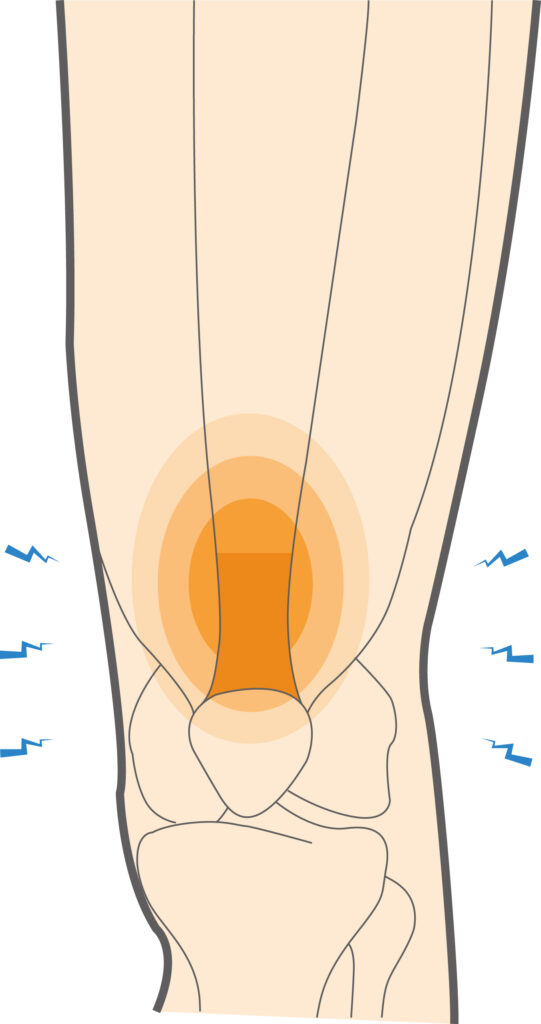
Can Quad Trigger Points Cause Knee Pain?
If you’re experiencing knee pain that won’t go away—even though your scans are clear, your form is solid, and your stretches seem on point—it might be coming from somewhere unexpected:
Your quads.
More specifically, the problem could be trigger points in your quadriceps that are giving you knee pain.
In this article, I cover:
How quad trigger points give you knee pain

Which muscles are most often involved
How I actually relieve the pain for good
The Quad–Knee Connection
Your quadriceps aren’t just responsible for extending your knee—they’re also directly connected to it through the patellar tendon.
This means any excessive tension or dysfunction in your quads can have a direct mechanical impact on your kneecap.
But trigger points add another layer of complexity: these tight, irritable spots in the muscle will tighten the muscle overall, but they will also increase inflammation and can send signals to nearby areas.
That means you could be feeling pain in your knee even though the root of the issue starts higher up in your thigh.
How Trigger Points Refer Pain to the Knee
Quad trigger points have been shown to cause knee pain, and are almost always present in patients with knee pain.
This is because the kneecap is continuous with the quadriceps muscles.
That means if the quads are tight due to trigger points, the knee will experience increased tension.
But the quads aren’t the only muscles that can affect the knee.
Other muscles cross the joint and if they are tight you need to address them as well.
Those muscles include:
- Your Hamstrings
- Your Adductors
- Your Calves
Strength, mobility or flexibility deficits will cause issues for your knees.

Use the other stretching or trigger point guides for those body parts to get rid of tightness there.
Here are the main ways the quad muscles will show up as knee pain.
Rectus Femoris Trigger Points: Often refer a deep ache to the center or top of the kneecap. These can feel like vague, dull pressure or mimic the early signs of runner’s knee.
Vastus Medialis Trigger Points: Refer pain to the inner side of the knee. This can lead to difficulty stabilizing the joint, or discomfort during lunges and squats.
Vastus Lateralis Trigger Points: Can send pain to the outer edge of the knee, mimicking IT band tension or lateral tracking issues.
Because this pain is referred, imaging like MRIs or X-rays may come back clear—even when the discomfort is persistent.
Use my Full Leg Trigger Point Guide or my specific Quad Stretching Guide to get started today.
Common Causes of Quad Trigger Points
Trigger points often develop due to:
- Repetitive stress (running, squatting, cycling)
- Weak glutes or hamstrings, leading the quads to overcompensate
- Prolonged sitting, which shortens and weakens the rectus femoris
- Lack of proper recovery after intense training
When the quads do more than their share of the work, they tighten up—and that tightness often shows up as knee pain.
How to Treat Quad Trigger Points to Relieve Knee Pain
If quad trigger points are the root of your knee discomfort, treating the muscle tissue itself is essential. Here’s how to do it:
Foam Rolling
Correcting quad tightness starts with foam rolling, active release or massage techniques.
That’s why I made this foam rolling guide for your quads. It has video tutorials and step by step written guides.
Manual Trigger Point Release
Similar to foam rolling, my quad trigger point guide is for deeper pinpoint accuracy on the trigger points that you’re looking for.
Use a softball or specified trigger point ball to help you get the tight knots out.
But remember, you should never be grimacing or above a 6 out of 10 in terms of pain.
Stretch Your Quads
Everybody knows the benefits of stretching.
If you have knee pain, understanding the different levels of quad stretches is crucial to fixing the pain.
You may also need to stretch your hamstrings, upper calves, or adductors depending on the location of your knee pain.
There are a few ways to get a great quad stretch. Check out my quad stretching guide for the full breakdown with videos and how-to guides.
Strengthen Supporting Muscles
The final level to fixing your knee pain may require fixing imbalances.
I don’t have my own guides for this, but recommend exercises popularized by knees over toes guy.
You can find some quad exercises for all levels on his Youtube channel.
Treat The Source – Not The Symptom
Relieving these trigger points could be the key to unlocking long-term knee relief and getting back to pain-free movement in your knee.
Want more help? Check out our full guide on trigger points and how to stretch for your entire body!
As always, ask any questions you have in the comments below.
Good luck!
-Nick